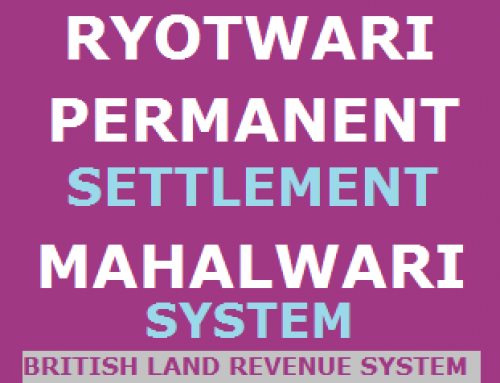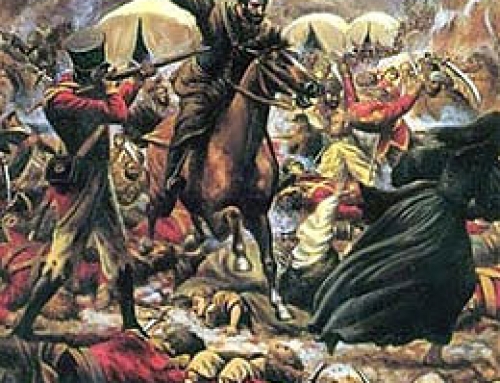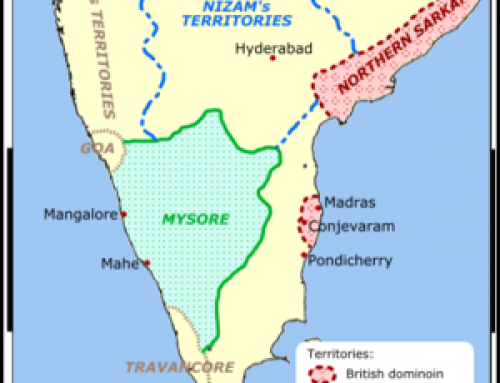For benefit of aspirants of various exams where general studies form a part of syllabus, the following quick notes for peasant movements in India will be very beneficial for revision. Please keep visiting this section for regular updates in study material.
Under colonialism, Indian peasantry was impoverished and suffered from variety of problems like high rents, arbitrary evictions, illegal tax levies and unpaid labour in zamindari regions. Eventually, the peasants started to resist this exploitation and took desperate measures at several places. these activities came to be known as peasant uprisings or peasant movements in India during the freedom struggle from 1857-1947.
I. The Indigo Revolt (1859-60):
- It was directed against European planters who exploited the local peasants by forcing them to take advances and sign fraudulent contracts according to which the peasants were compelled to grow Indigo, rather than the more profitable rice.
- These foreigners intimidated the peasants through illegal confinements and other such atrocities.
- The Indigo revolt in Nadia district of Bengal in 1859 and was led by Digambar Biswas and Bishnu Biswas who organised the peasants to resist the force of planter’s lathiyals (armed retainers).
- This revolt has been vividly portrayed by acclaimed writer Din Bandhu Mitra in his play, Neel Darpan. Its publication in 1860 led to the appointment of an Indigo Commission by the government.
II. The Pabna Movement (1872-76):
- The peasantry in East Bengal was oppressed by the zamindars. They frequently evicted, harassed, and arbitrarily enhanced the rent through ceases (abwabs) and use of force.
- The zamindars also prevented the peasants from acquiring the Occupancy rights under the Act of 1859.
- In the Yusufzahi Pargana of Pabna district, Bengal, an Agrarian League was formed in May 1873.
- The tenants refused the enhanced payments and the peasants showed legal resistance against the zamindars in the courts.
III. The Deccan Peasants Uprising (1875):
- It was against the corruption of the Marwari and Gujarati money lenders.It started as social boycott of the moneylenders by the peasants but was later transformed into an armed peasant revolt in the Poona and Ahmadnagar districts of Maharashtra.
- The peasants then attacked the moneylender’s houses, shops and burnt their records and bond documents down.
- The uprising later received suppoert from M G Ranade of Poona Sarvajanik Sabha.
IV. The Punjab Peasants Discontent (1890-1900):
- Peasant discontent in Punjab occurred due to rural indebtedness and the large scale alienation of agricultural land for non-cultivating classes.
- The Punjab Land Alienation Act, 1900 was passed to prohibited the sale and mortgage of lands from peasants to moneylenders. This gave Punjab peasants partial relief against oppressive land revenue demand by the authorities.
V. The Champaran Satyagraha (1917):
- The peasants of Champaran district of Bihar were excessively oppressed by the European planters. They were forced to grow indigo on 3/20th of their land under the tinkathia system, and to sell this at prices fixed by the planters.
- Gandhiji reached Champaran in 1917 accompanied by Babu Rajendra Prasad, Mazhar -ul-Huq, J.B. Kripalani, Mahadev Desai to conduct a detailed inquiry into the condition of the indigo peasants.

- The baffeled district officials ordered him to leave, but he defied the order and invited trial and imprisonment.
- this led the Government to apoint an Enquiry Committee in June 1917, with M.Gandhiji as one of its members.
VI. The Kheda Satyagraha (1918):
- The Kheda campaign took place in Kheda district of Gujarat directed against the Government.
- In 1918, the crops failed in the Kheda districts in Gujarat due to low rains but the government refused to let go of the land revenue and insisted on its full collection of revenue.
- M. Gandhi along with Vallabhai Patel came in support of the peasants and led them to withhold all revenue payment till their demand for remission was fulfilled.
- By June 1918, Government had to concede the demands of the satyagrahi peasants.
VII. The Moplah Rebellion (1921):
- The moplah’s were mainly muslim tenants of Hindu landlords in the Malabar ditrict of Kerala.
- In August 1921, these tenants rebelled due to grievances regarding the lack of security of tenure, high rents, renewal fees, and other oppressive landlord actions.
- They were encouraged to rebel by the radical leaders there. In 1920, the Khilafat Movement had taken over the tenant rights agitation which had been ongoing in the Malabar since 1916. After the arrest of established leaders of the Congress and end of the Khilafat movement, only radical leaders had control.
- Initially the rebels targated symbols of authority like the unpopular jenmies (landlords, mostly Hindu), courts, police stations, treasuries and offices, and the European planters. Later the movemnt took communal turn and eventually lost base.
<<<<<<<<Read about ancient indian scientists here>>>>>>>>
VIII. The Bardoli Satyagraha (1928):
- In surat district , the Bardoli taluk was the centre of this intensely politicised peasant movement.
- It was led by Vallabhai Patel. The locals gave him the title of “Sardar” for his leadership.
- When the British government increased the land revenue by 30% in present day Gujarat, resistance was showed by the residents.
- This led to the organisation of a ‘No-Revenue Campaign’ by the Bardoli peasants including women.
- There were unsuccessful attempts by the British to suppress the movement. But finally an Inquiry committee was appointed to look into the matter. It found the hike unjustified.
IX. Tebhaga Movement (1946):
- In Bengal rich farmers (Jotedars) leased the farms to sharecroppers known as Bargadar or Bagchasi or Adhyar.
- The Flood Commission, had recommended tebhaga, under that the Bargadars (sharecropper) should get 2/3 of crop share and the Jotedar (landlord) should get 1/3rd of crop produce share.
- Tebhaga movement was aimed at getting the recommendations of Flood Commission implemented through mass struggle.
- It was led by – Bengal Provincial Kisan Sabha, against the zamindars, rich farmers (Jotedars), moneylenders, local bureaucrats and Traders.
- The main slogan of the movemnt was – ” nij kamare dhan tolo”.
- The Muslim league govenment led by the Suharwardy introduced the Bargardari Bill along with repression by force.





Its really nice…love dis
It really helped me in gathering so ma informations about history